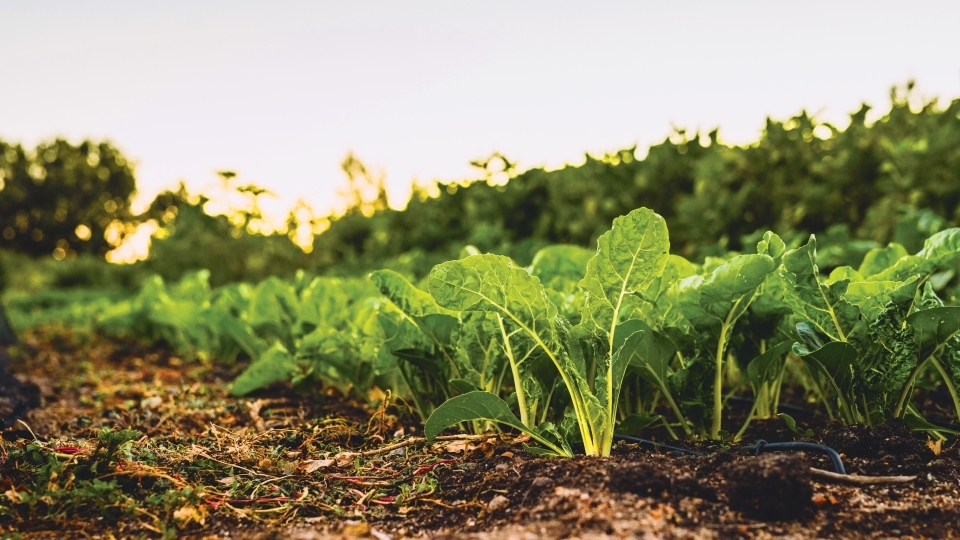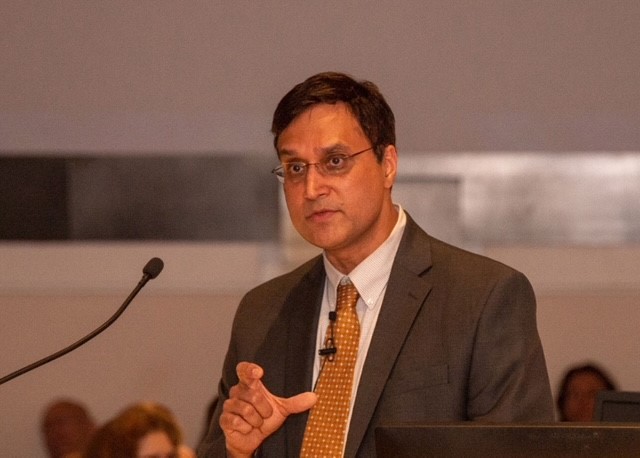Think Globally, Eat Locally: Changing Global Food Systems One Household at a Time
July 18, 2024
- Author
- Ann Tutwiler ’80

Through one lens, global food and agricultural systems—the networks of farmers, researchers, governments, seed and fertilizer companies, food processors, food traders and transporters, and food retailers—have been a tremendous success.
In 1960, one-third of the world’s population was hungry and global production of the major staple crops (rice, wheat and corn) hovered around 740 million metric tons. Last year, according to the Food and Agriculture Organization (FAO) of the United Nations, global cereal production topped 3.6 billion metric tons. As a result, apart from war-torn regions and conflict zones, there has not been a major famine in decades and the overall percentage of people facing hunger dropped from 14% in 2002 to below 9% in 2022.
While this global upsurge in food production, known as the Green Revolution, has a bad reputation today, in the 1960s and 1970s it was addressing the key challenge that policy makers in Asia and Africa faced at the time — widespread hunger and famine.
Since the days of the Green Revolution, the challenges we face, and our understanding of those challenges, have changed. The same shifts in food production and distribution that have alleviated hunger and famine around the world have also led to environmental degradation and increases in diet-related illnesses, like heart disease. Viewed through a modern lens, our food systems are failing both people and the planet.
Finding Solutions
Food and agriculture systems are incredibly complex. While a car is a car whether in France or Brazil, and a solar panel in the United States looks very much like a solar panel in Africa, and a cell phone in Japan looks like a cell phone in Laos, how food is grown and what can be grown and what is eaten are highly dependent on geography, climate, history and culture. There is no one-size-fits-all solution.
The good news is that many, many people and organizations are working together to address food system challenges, including agricultural greenhouse gas emissions, food insecurity, malnutrition and diet-related illness. These organizations range from the United Nations to national and local governments, to international non-governmental organizations that work on environmental, nutrition and social justice. Farmers and Indigenous peoples’ organizations are part of the conversation in ways they have never been before. Not only are these organizations working together, but they are also taking a systemic approach to the challenges — rather than looking for silver bullet solutions that often backfire.
Individual choices also contribute to these challenges.
Here are some things we can all do to improve our own health and the health of our environment.
Eat a plant-forward diet. Fortunately, what’s good for the planet’s health also happens to be good for people’s health. Moderating consumption of red meat not only helps reduce greenhouse gas emissions and pressure on farmland, but also reduces the likelihood of chronic disease. This does not necessarily mean becoming a vegetarian or a vegan (although those are certainly options), but simply eating more plant-based foods can make a big contribution.
A 2014 study published in Nature estimated that as more and more people can afford a meat-heavy ‘Western’ diet, by 2050, our per capita annual greenhouse gas (GHG) emissions will be over 400 kilograms compared to 300 kilograms in 2009. If we instead shift to a plant-forward Mediterranean-style diet (or its equivalent in Asia, Latin America and Africa), our 2050 GHG emissions would be the same as our 2009 levels.
Eat a diverse diet. Just three crops (rice, corn and wheat) account for more than 50% of our food consumption. Just 12 crops and five animal species account for 75% of global consumption. Yet, we know that some 5,540 crops have been used for food throughout human history. Explore other foods — other grains, other fruits and vegetables — and help create demand for these foods. This will encourage farmers to grow them and improve your health at the same time.
Waste less food. One-third of all food is wasted. This means one-third of land, fertilizer, seeds, fuel and labor are also wasted (not to mention one-third of the money we spend on the food). We wouldn’t go to a gas station and pour one-third of a tank of gas onto the pavement — but somehow, one-third of the food we buy in restaurants and at home ends up in the trash and landfills (where it also creates more greenhouse gas emissions).
Buying only what we can eat at restaurants and grocery stores helps a lot. Realize that the “use by, sell by and best by” labels on food have nothing to do with food safety. Use your senses — sight, smell and taste — to determine whether food is still safe to eat. Learn to cook — at least a little. Vegetables on the verge can make a great soup; fruit on the fritz can make a great pie; cheese on the cusp can make a great quiche. Eat more seasonal, local foods grown with sustainable practices if you can. This will create demand for these foods and will reward farmers in your area.
Encourage your elected officials to incorporate food and agriculture into local plans for mitigating climate change and environmental damage. Several states and local jurisdictions have incorporated food and agriculture into their climate change and environmental quality plans. Given the outsize impact that food and agriculture have on climate change, soil health, water quality, and more, every state and every local government should have a plan for how to improve agriculture’s relationship with the local environment.
Advocate for healthy school lunches. If you have kids in school (or even if you don’t), push your local schools to provide healthier meals that contain less fat, sugar and highly processed foods. Not only do schools and other institutions account for a large share of food demand, but good school lunches can also help set a pattern for lifelong healthy eating.
Ann Tutwiler ’80 is senior fellow at Meridian Institute and incoming chair of the Global Alliance for Improved Nutrition. Tutwiler taught two classes at Davidson in global food systems as a James K. Batten Professor of Public Policy. She is formerly the director general of Bioversity International, a $30 million agricultural research center focused on the role of agricultural biodiversity in diets and production systems. She is the former deputy director general of the United Nations Food and Agriculture Organization.
This opinion piece was originally published in the Spring/Summer 2024 print issue of the Davidson Journal Magazine; for more, please see the Davidson Journal section of our website.



